Welcome to National Family History Month, a month dedicated to family history research!
Alongside your family history explorations, local and social history research can help us to understand something of the motivations, places, lives and times of our Victorian ancestors.
Nowadays, the proliferation of online material can put these discoveries right at our fingertips and can help find answers to such questions as What did they find when they arrived in their new country? Or How did they make a life?
This blog includes a few snapshots from our collections and beyond, to help you build a picture of the journeys undertaken and of the Victoria your ancestors may have inhabited in the nineteenth century.
The voyage
The voyage to Australia was long, arduous and risky. Ocean travel meant journeys under sail, taking between 70 and 110 days. Later in the nineteenth century clipper ships sped the trip up to 50-70 days1. News of their new world from departed travelers was eagerly anticipated.
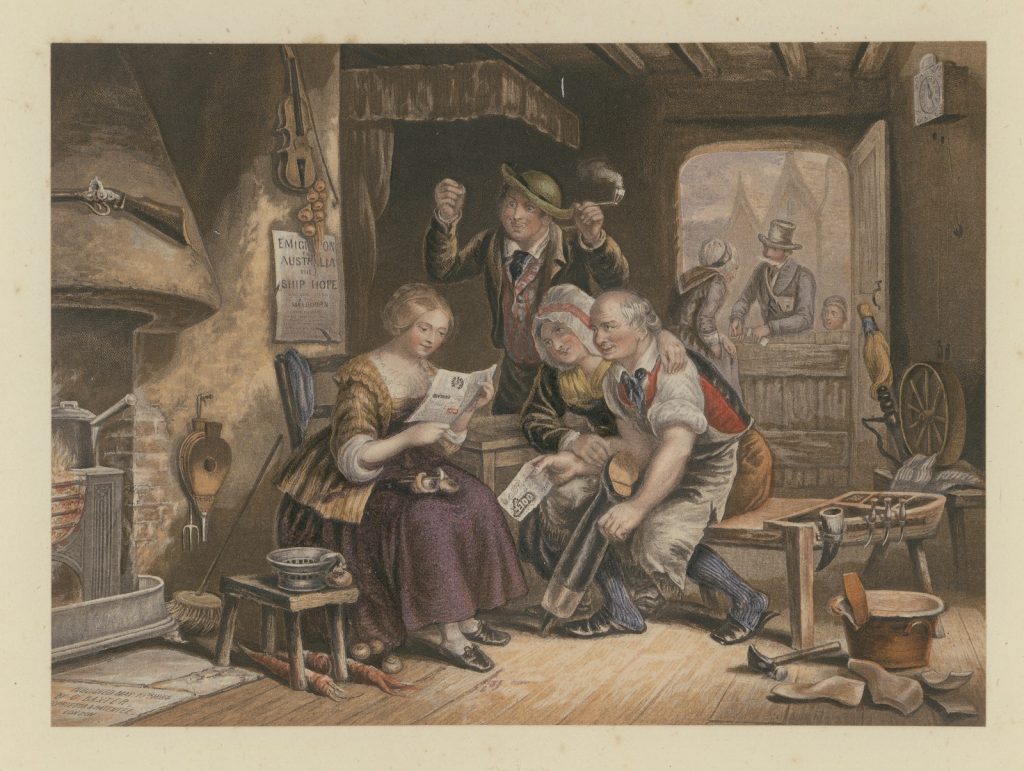
The following resources can be used to learn more about the experience of travelling to Australia
- Passage to the world : the emigrant experience, 1807-1940
- Saltwater in the ink : voices from the Australian seas
- Life and death in the age of sail (ebook, available online to registered users of the Library)
- Journeys to Australia
Leaving
An oft-mused upon topic is what motivated my ancestor to leave their home country? Studying the history of Australia immigration in the 19th century can reveal the variety of circumstances that drew people to far distant shores in search of a better or different life. From the 1830s the British government sponsored assisted migration schemes to relieve the home government of some of their welfare responsibilities, and provide a population boost for the colonies.
Of course, there was a component of our early immigrant intake who had no say in their arrival here – the Digital Panopticon is a comprehensive resource for exploring the justice and convict systems, both in England and the country of imprisonment.
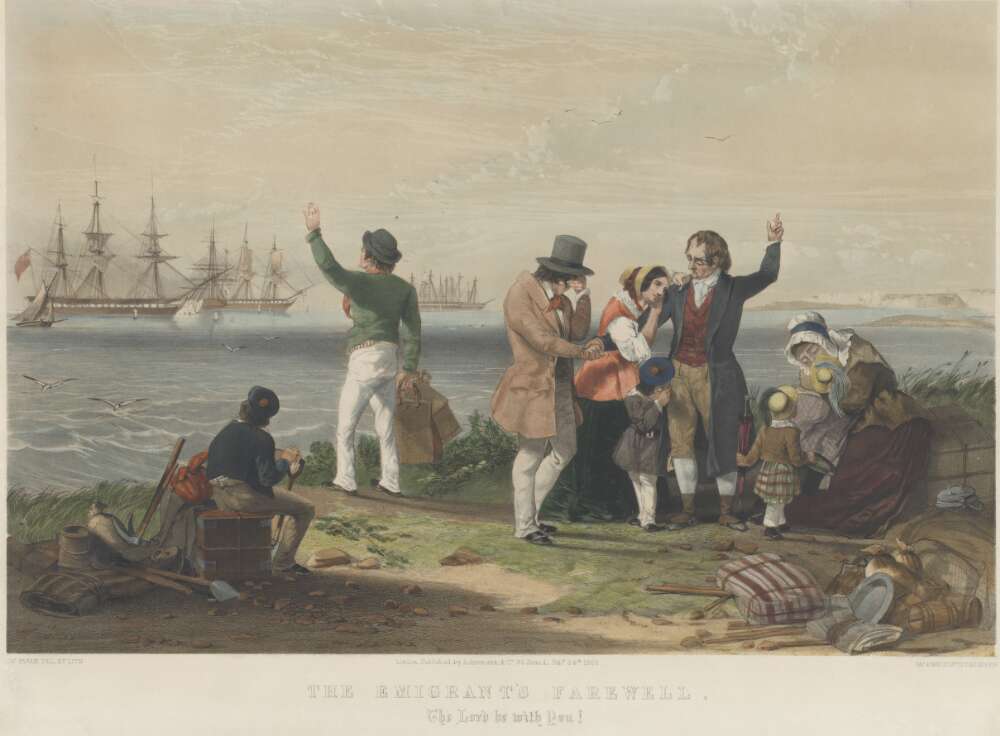
You may be fortunate enough to have family letters or diaries that can answer these questions. Other times, we can only speculate on personal motivations, and make some educated guesses, through knowledge of historical, political, and economic conditions of the time and place of departure. Letters, as they compare the new country to the old, can give us some insight. Hardship too was a motivating factor, and through letters sent ‘home’, we can gain some understanding of comparative earnings and expenses.

The heartfelt message at the end of Alexander Cameron’s letter gives us a sense of the enormity of the physical and emotional distances travelled:
I must conclude in wishing you could get this to your hand, although I cannot the half of what I wish to tell you. Mind and write as soon as you get this. Excuse hurry – the sheeps is away. I remain your’s till death,
Letters from highland emigrants in Australia, dated between September and December, 1852 [London?], p 19
Alexr. Cameron.
After arrival
Gold
Gold discoveries in central Victoria, had a dramatic effect on the fabric of life as the population surged from 77,000 in 1851 to 411,000 by 18572. Hopeful travelers came from all over the world to join in the hunt for golden riches. Chinese people particularly came to the goldfields – over 42,000 arrived during the 1850s, working as miners and also contributing to the food supply through market gardening enterprises.

Aspiring miner Henry Brown left England in 1857, and after arriving in Melbourne headed for the goldfields. His initial impressions were not positive.
I went to a small lodging house, where accommodation had been provided; but all was rough and coarse—the people, the viands, and their manner of supplying the wants of their boarders. The streets were filthy, and the footpaths, unpaved, were ankle deep in mud.
Brown, Henry, 1862, Victoria as i found it during five years of adventure, in Melbourne, on the roads, and the gold fields : with an account of quartz mining and the great rush to Mount Ararat and Pleasant Creek, London, Newby, p.35-6
but he wrote of the ‘old chums’ :
…. my surprise was great to find that in almost every instance I was called upon to hear, from their lips, a detail of ups and downs, given without the slightest reserve, or any modesty in relating little personal details and piccadiloes that often times had caused their misfortunes, and which, in England, most men would have striven hard to conceal; but after all their mishaps, found them sanguine about doing better next time, and not having the slightest doubt but that their blessed luck must soon have a change.
p.37-8
Emily Skinner’s diaries recount her voyage to Australia, over 2 months at sea, arriving in August 1854, and her experiences on the Ovens and Bucklands goldfields.
The goldfields drew many Chinese people to Australia, and their experiences and contributions are being progressively rediscovered and recorded.
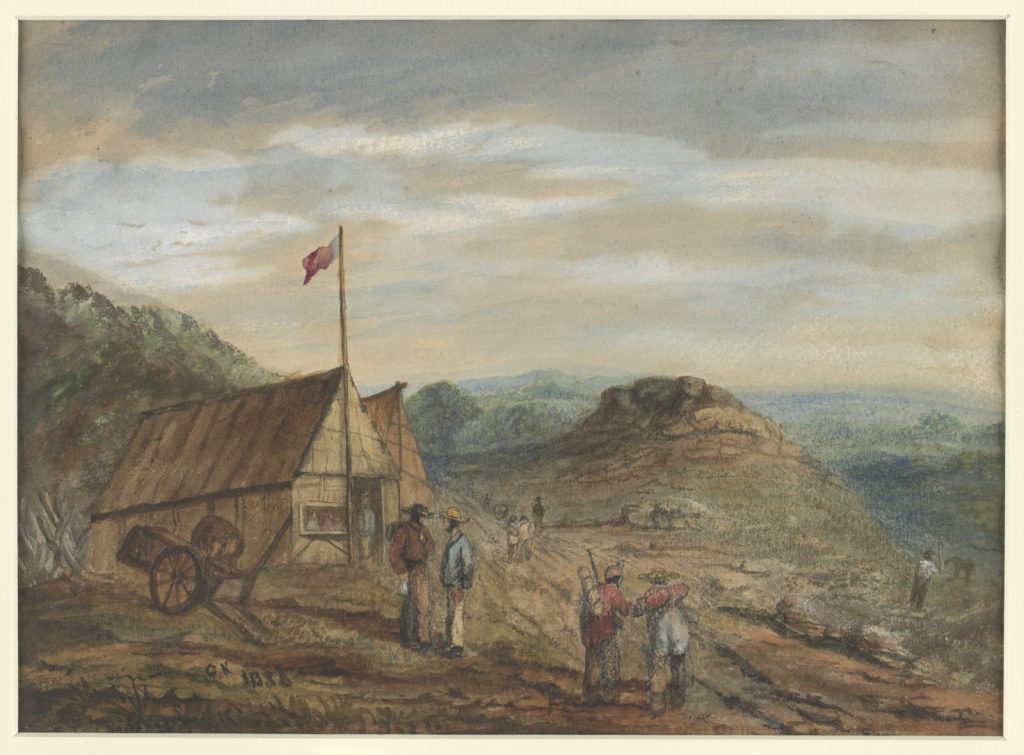

The Black Hill Ballarat, Sept 1857, drawing by Samuel Douglas Smith Huyghue, H25190
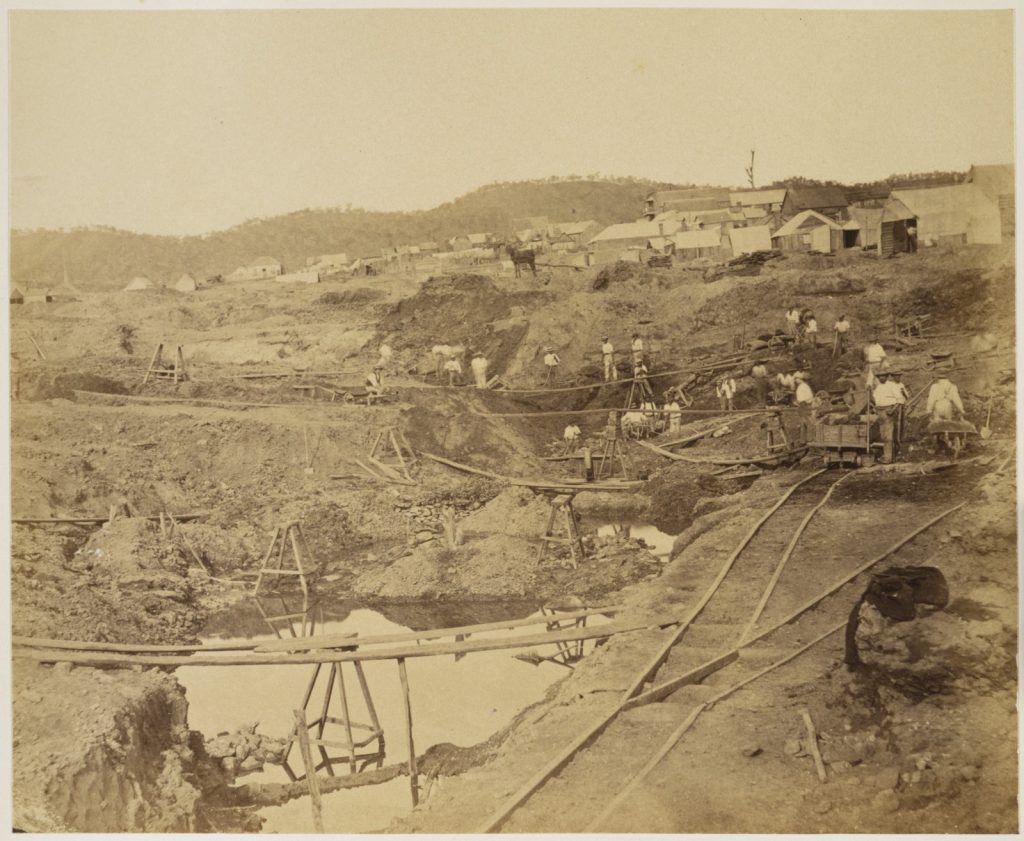
Working life
Learning of peoples’ work can add further dimension to our understandings of past lives. Our occupations guide can be helpful here and you can browse the Australian dictionary of biography by occupation. The Victorian Yearbooks, preceded by the Statistics of the Colony of Victoria provide a statistical overview of the state – the first volume published in 1850, on the eve of the gold rushes. As well as demographic information, manufacturies, imports, exports, agricultural production are included.
The Library is fortunate to hold the diaries of Joseph Jenkins, also published as Diary of a Welsh swagman. Arriving in Australia in 1869, Jenkins worked as an itinerant agricultural labourer in central Victoria. From 1884 he worked as a drain cleaner for Maldon Council, returning to Wales in 1895. His diary captures the rigors and realities of life on the road and a hard physical life. The vagabond papers by John Stanley James records some of the rich tapestry of Melbourne life. First published in 1877, the frontispiece promises readers “sketches of Melbourne life in light an shade”.
For many women, domestic service was their chief occupational opportunity. Miss McRitchie writes to her father that ‘the housemaids have no grate to clean….the work is not so hard as it is at home, nor the mistresses are not so sassy, they are glad to get any person to work for them’
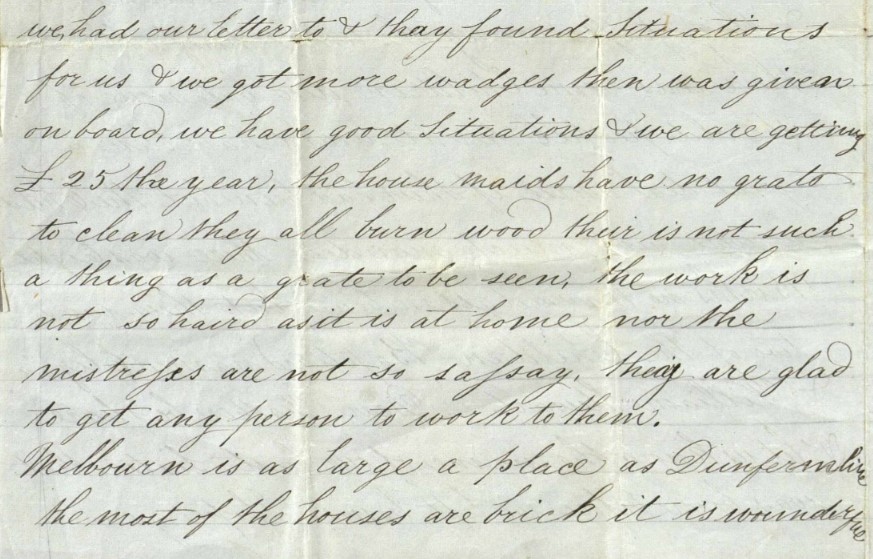
Our research guide What it used to cost can help with understanding something of the economic realities of the times and the National Archives (UK) have a nifty currency converter for comparing living costs back to 1270. The page also includes brief articles on living in the various centuries. Their website is well worth exploring for information on houses, towns and cities.
Local history
Our La Trobe collections include local histories and Victorian history generally. Descriptions of Victoria for various time periods – to 1850, 1851-1900 include digitised publications as people recorded their stories to inspire, inform and occasionally forewarn others.
Broad searches on history or social conditions will give you a sense of the variety of material available. You can also search by place name, plus history – for example Port Fairy history, Bairnsdale history and Wangaratta history or a region – such as Wimmera or Mallee, or Gippsland.
Our Popular digitised collections include the Victorian Historical Journal published by the Royal Victorian Historical Society. The work and holdings of local history societies are an invaluable resource. Try contacting them through the public library service – or go through the Federation of Australian Historical Societies.
Imagining the localities, towns and cities where our ancestors lived can be boosted by images our Pictures Collection. Photographs of streets, businesses and houses can give us a sense of the neighbourhood. eHive, home of Australian Community History Collections online, is a wonderful repository of objects reflecting every sphere of life, gathered by local and historical societies.
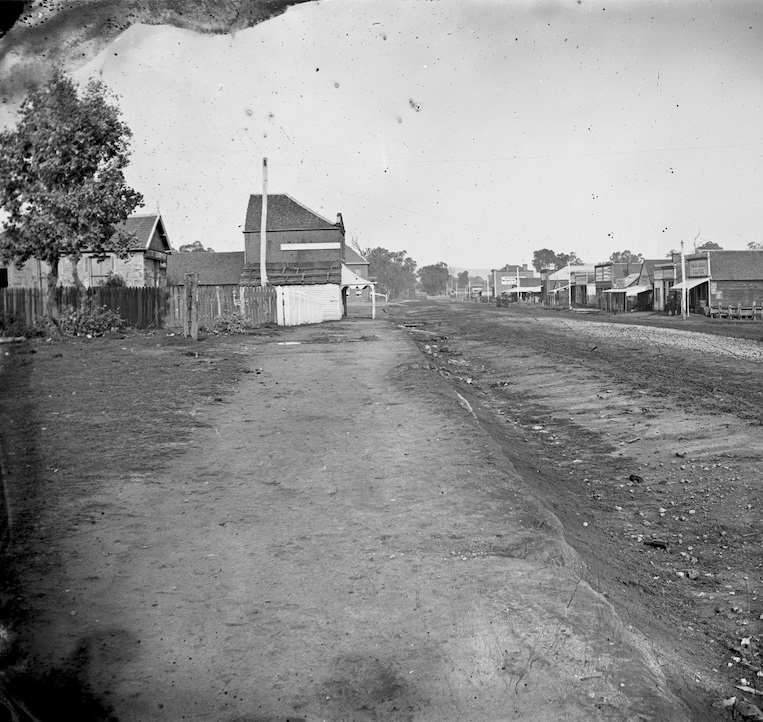
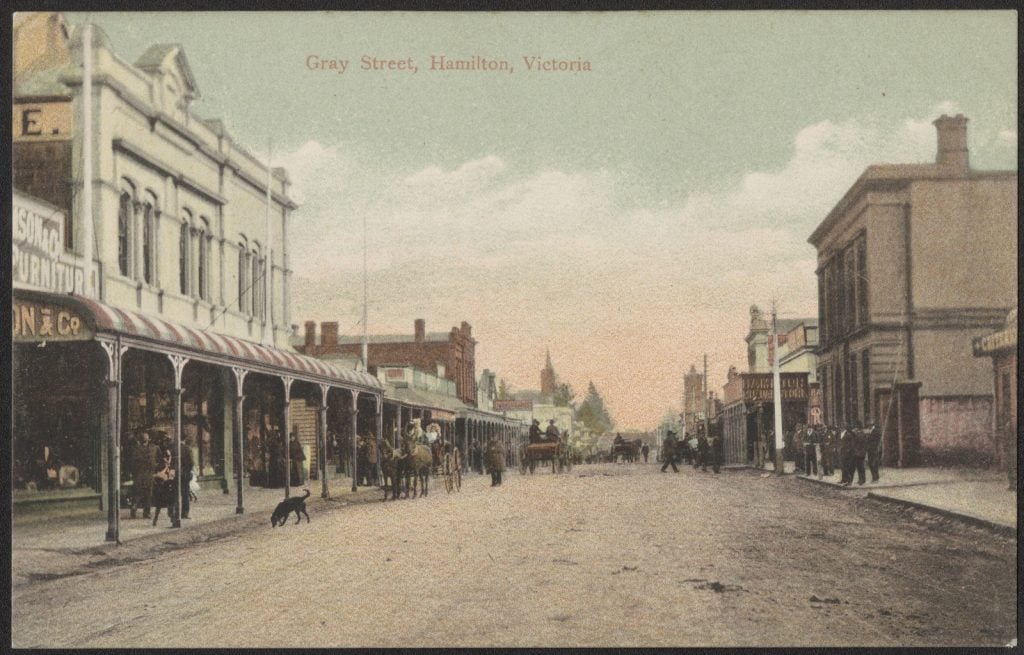
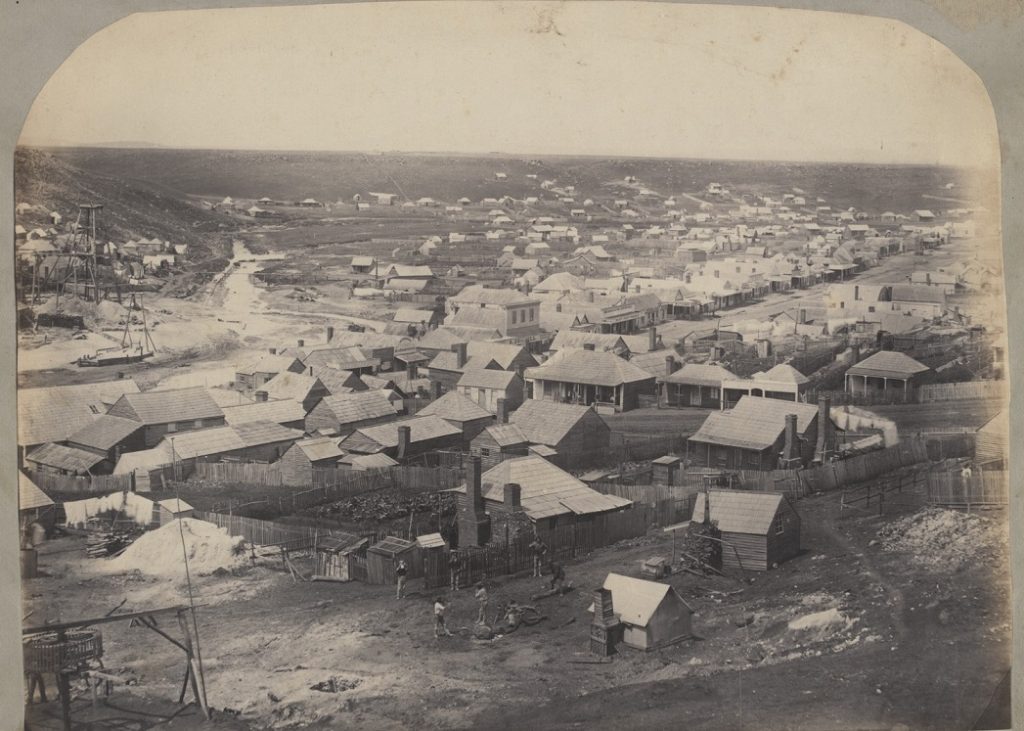
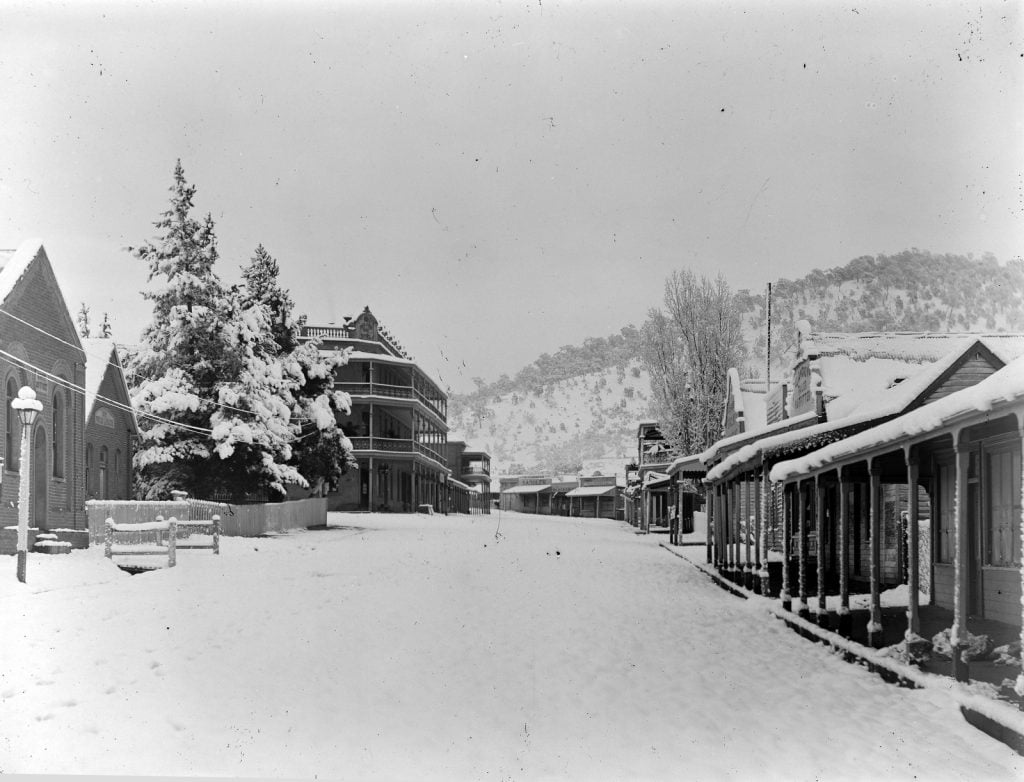
[Streetscape under snow … Omeo], ca.1880, photo by Walter Hodgson, H42506/382
Social activities
Sporting and social club activities – then as now – were rich sources of entertainment and opportunities to meet and spend time with others outside of the daily routine.

Trove’s digitised newspaper website provides us with a vivid description of the day, perhaps the one photographed above:
Afternoon tea was served by the ladies of Alexandra, and prior to leaving a parting cup was provided and greatly appreciated. The trip home was glorious, bowlers being in a jolly mood after a good win and a pleasant day. Numbers of rabbits and a stray fox or two were scattered, whether by the cars or by the singing of the bowlers was not quite evident. However, the day as voted as one of the best when the cars arrived at Healesville about 9 p.m.
Bowling. Healesville and Yarra Glen Guardian ‘by Jack’, 10 February 1923 p. 3.
News reports of the Speedwell Cycling Club feature regularly in the papers – the races and outings, plus evening social events were popular and well attended.
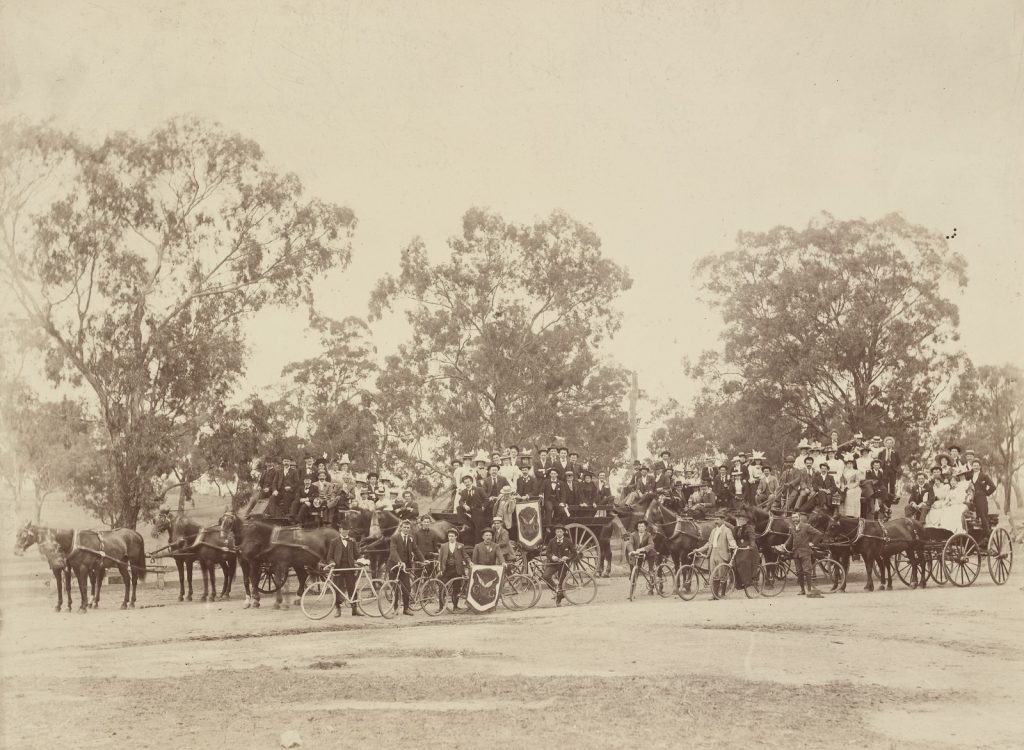

North Melbourne Gazette, 15 October 1897, p. 2.
Databases and research guides
- Research guides will guide you through the many genealogical tasks it takes to complete your family history.
- A-Z database listing arranges our array of online resources, alphabetically, and by subjects including family history, Australian history, world history and historic newspapers.
- Adam Matthew (AM) databases include primary and secondary sources, visual material and more from countries around the world, and including Australian content.
- Early experiences in Australasia includes similar types of material from Australian and international collections.
- Ergo, created for secondary school students, is valuable for researchers of all ages, as it explores themes in Australian history.
Along with these resources, Library staff have written a huge array of blog posts highlighting specific collection items and areas, or focusing on a topic. The Family matters category focuses on family history topics and resources.
And when you have finished – we also have a guide on publishing your family history. We’d love to add yours to our collection too!
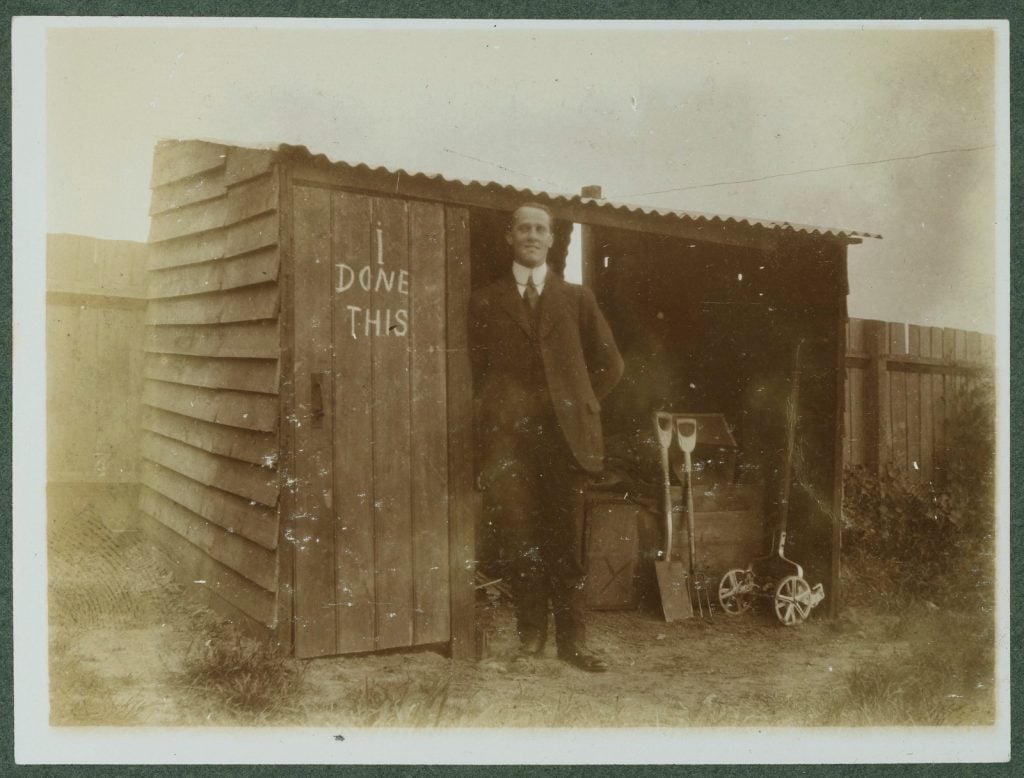
References
- Maritime journey from Britain to Australia
- Immigration and ethnicity: an overview, eGold encyclopedia, viewed 6 April 2023, https://www.egold.net.au/biogs/EG00006b.htm

